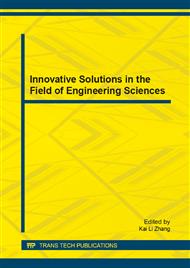p.576
p.581
p.586
p.591
p.599
p.604
p.609
p.613
p.618
Air-to-Water Heat Pump Monitoring in the Cold Climate Region
Abstract:
This article gives an overview of the study on using the air-to-water heat pump (A&WHP) for heating buildings in cold climate regions. The study was conducted in a relatively cold region (59°N), where the ambient temperature during the winter usually falls below-20°C. Despite the fact the COP of the air-to-water heat pump in the winter period was 2.5 on average and during the heating season of 2013/2014 the additional energy requirement was less than 3%.
Info:
Periodical:
Pages:
599-603
Citation:
Online since:
June 2014
Authors:
Keywords:
Price:
Сopyright:
© 2014 Trans Tech Publications Ltd. All Rights Reserved
Share:
Citation:


